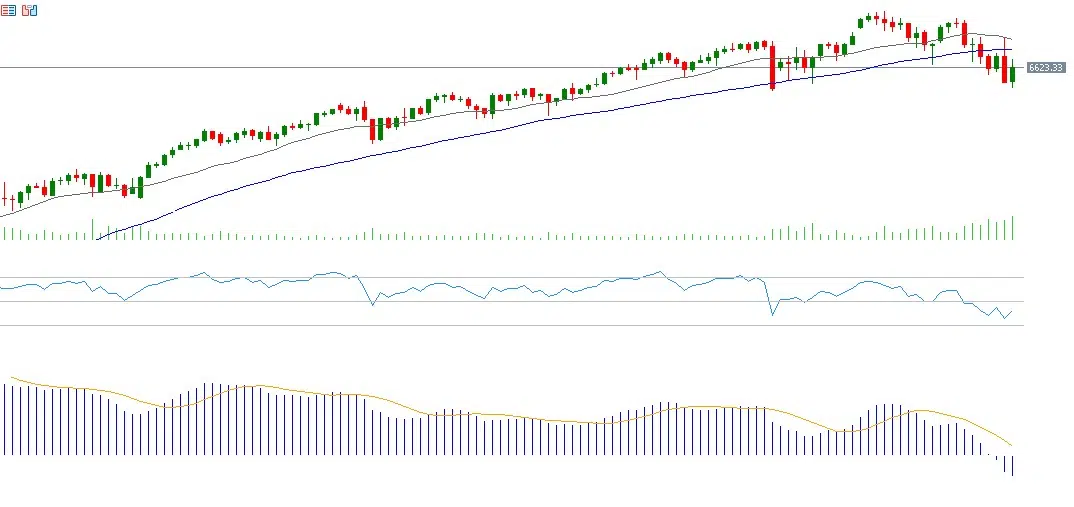Last week saw the release of several important global economic data points. In the United States, jobless claims rose to 232,000 while the trade deficit narrowed to $59.6 billion; crude oil inventories declined sharply. Labor market data were mixed, with non-farm payrolls increasing and unemployment rising to 4.4%. PMI indicators showed mixed performance, while the Michigan sentiment index improved and inflation expectations eased. In the Eurozone, inflation slowed slightly, the manufacturing PMI weakened, and the services PMI rose. The UK posted slower inflation and weaker retail sales, alongside stronger manufacturing and weaker services activity. Australia reported improvements in both manufacturing and services PMIs, while Japan recorded export growth, a decline in imports, higher national inflation, and continued contraction in manufacturing. Meanwhile, China’s central bank held its 1-year and 5-year loan prime rates steady at 3.00% and 3.50%, respectively, in line with expectations and consistent with its accommodative stance to support economic growth.
Market Analysis
USD/CNH Pair
The pair has been trading within a horizontal range between 7.1000 and 7.1500 for the past two months and is down roughly 3% year-to-date. Despite the preliminary trade agreement between China and the U.S., uncertainty remains over its sustainability amid intense competition between the two nations in technology and artificial intelligence, as well as geopolitical tensions surrounding Taiwan and cautious friction between China and Japan. Recent Chinese economic data also show noticeable slowing, requiring further stimulus to support growth, production, and consumption. The RSI currently reads around 44, indicating bearish momentum for the USD/CNH pair.
Dell
Dell’s stock has risen about 6% year-to-date. Markets await the company’s earnings report on Tuesday, November 25, 2025, with expectations of earnings at $2.55 per share, compared to $2.15 previously. Revenues are expected to reach $26.4 billion, up from $24.4 billion. The RSI currently stands at 32, signaling bearish momentum, while the MACD shows a bearish crossover between the MACD line (blue) and the signal line (orange), confirming negative momentum for the stock.
Gold
Gold prices fell 0.45% last week, closing at $4,065 on Friday. The metal is under pressure from a stronger U.S. dollar, which rose nearly 1% last week to 100.40—its highest level since May 29, 2025. Uncertainty surrounding the path of U.S. interest rates remains the biggest risk for gold ahead of the Federal Reserve’s December 10 meeting, with markets exhibiting high volatility after mixed labor market data for September. Gold remains up 55% year-to-date. Key factors supporting gold include geopolitical tensions (Russia–Ukraine, U.S.–Venezuela), rising pressures between Japan and China, political pressure from President Donald Trump on the Fed, inflation risks (with inflation still near 3%, above the 2% target), continued central-bank buying, and declining investor confidence in fiat currencies such as the USD, EUR, JPY, and GBP. The RSI currently stands near 52, indicating positive momentum.
S&P 500 Index
The S&P 500 fell about 2% last week, closing at 6,603 on Friday. The decline reflects concerns over a potential bubble driven by stretched valuations in AI-related tech stocks, along with uncertainty surrounding the future path of U.S. interest rates and mixed statements from Federal Reserve officials ahead of the December 10 meeting. Despite the pullback, the index remains up roughly 12% year-to-date. The RSI currently reads 41, signaling bearish momentum, while the MACD shows a bearish crossover between the MACD line (blue) and the signal line (orange), reinforcing the negative outlook.
Key Events This Week
Markets are closely watching several major economic releases this week.
• Tuesday: U.S. retail sales, producer prices, consumer confidence, and pending home sales.
• Wednesday: Reserve Bank of New Zealand interest rate decision, with expectations of a 25 bps cut to 2.25%. Also: Australia CPI, U.S. durable goods orders, GDP, jobless claims, Core PCE inflation (the Fed’s preferred gauge), and crude oil inventories.
• Thursday: China industrial profits year-to-date and Eurozone consumer confidence.
• Friday: Tokyo CPI, and GDP data from Switzerland and Canada.
Please note that this analysis is provided for informational purposes only and should not be considered as investment advice. All trading involves risk.




